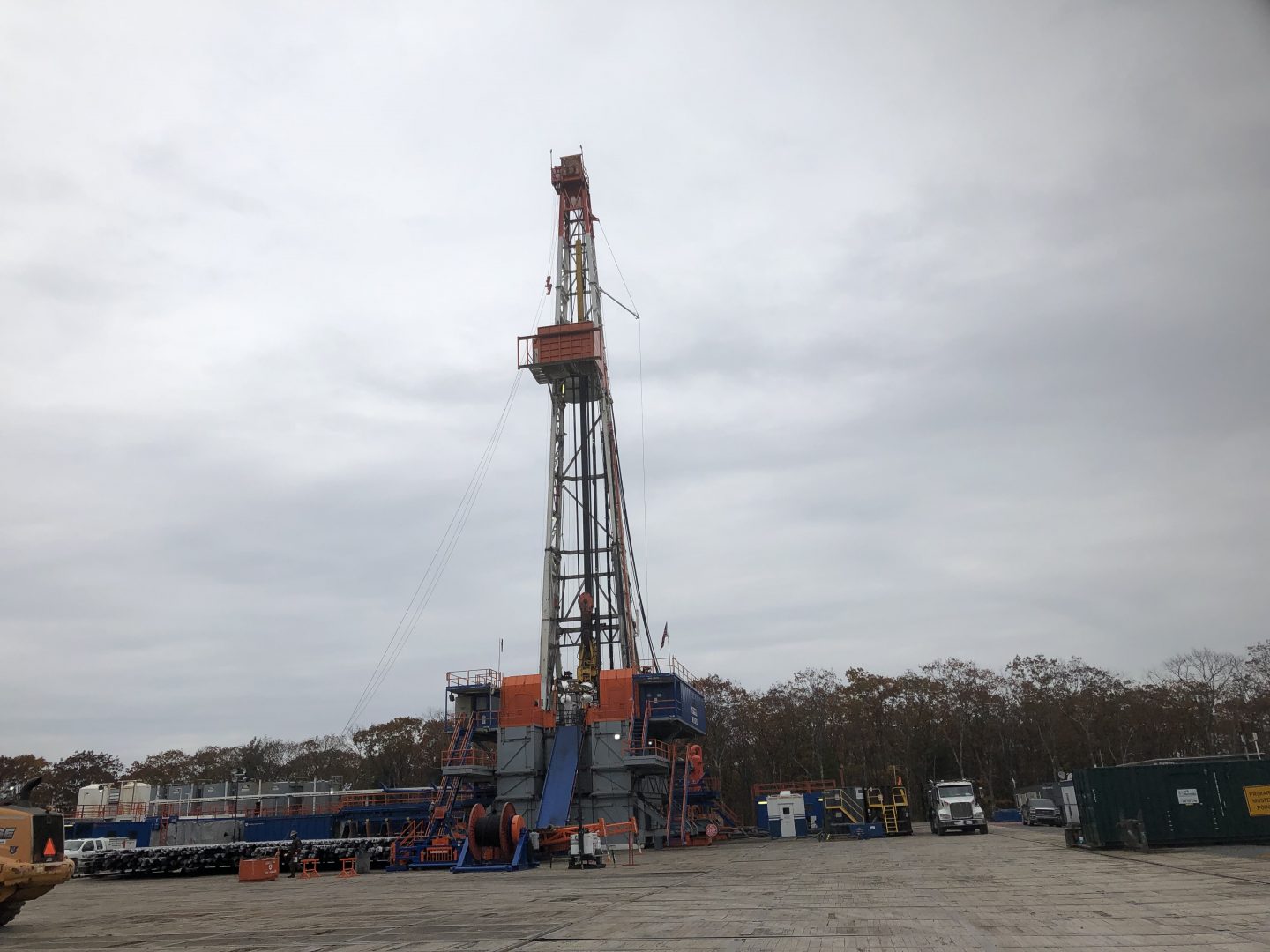
An active drill site on state forest land in Tioga County, Oct. 2019. The Seneca Resources well will tap the Utica Shale formation.
Susan Phillips / StateImpact Pennsylvania


An active drill site on state forest land in Tioga County, Oct. 2019. The Seneca Resources well will tap the Utica Shale formation.
Susan Phillips / StateImpact Pennsylvania

Susan Phillips / StateImpact Pennsylvania
An active drill site on state forest land in Tioga County, Oct. 2019. The Seneca Resources well will tap the Utica Shale formation.
Pennsylvania natural gas drillers pulled even more gas from the ground in 2021 than they did the year before.
It’s the latest in a pattern of annual record-setting for the industry.
The Department of Environmental Protection’s most recent annual report shows that the pace of new drilling slowed in recent years, but the combination of old and new wells enabled companies to extract a record amount of gas.
Operators drilled 648 new wells last year, an increase from the 527 drilled in 2020, but less than the number of wells drilled in 2017, 2018, and 2019.
In 2021, drillers reported producing more than 7.6 trillion cubic feet of gas. That’s about half a billion more cubic feet than was extracted in 2020.
The industry has consistently broken annual records in the last decade, thanks to the rise of unconventional drilling, which allows companies to get harder-to-reach deposits through fracking and horizontal drilling.
Meanwhile, the conventional section of the industry – generally made of shallower, vertical wells – has been producing less gas year over year since 2014.
Wider use of natural gas in Pennsylvania has edged out coal, bringing down the state’s carbon dioxide emissions. But natural gas is mostly made of methane, a gas with 80 times more warming power than CO2 over a 20 year period, and methane can leak at different points in the process.
The Wolf Administration finalized rules this year to limit leaks of volatile organic compounds and methane at oil and gas sites, though the regulation exempts many low-producing wells.
Climate scientists agree the world needs to quickly ramp down fossil fuel use to avoid the worst effects of global warming.
There’s overwhelming scientific evidence that human activity is warming Earth at an unprecedented rate. It’s already responsible for extreme weather, rising sea levels, and more severe droughts worldwide. Pennsylvania is on track for more intense heat waves and stronger storms in coming years, the Department of Environmental Protection says.
Scientists stress that rapid action is crucial to avoid the worst effects. Pa.’s most recent Climate Action Plan calls for an 80% reduction of greenhouse gas emissions by 2050, compared to 2005 levels.
Doing that will require hard choices by the nation’s fourth-largest carbon emitter: Pennsylvania must figure out how to cut emissions while planning for the future of people and communities that rely on the fossil fuel industry.
Join the discussion about climate and Pa. at Climate Solutions.
DEP says it increased inspections at natural gas sites last year, after the COVID-19 pandemic limited site visits the year before.
The report shows inspectors did more than 34,000 compliance inspections in 2021, about 8,000 more than the year before but still less than previous years.
Inspectors found more than 8,600 violations and collected over $2.5 million in fines.
DEP highlighted a drop in permit processing times. Republican lawmakers have often criticized the agency for not issuing permits fast enough.
DEP issued 997 new drilling permits in 2021. It took an average of 20 days to issue a permit in the southwest district of the state and 22 days in the northwest.
StateImpact Pennsylvania is a collaboration among WITF, WHYY, and the Allegheny Front. Reporters Reid Frazier, Rachel McDevitt and Susan Phillips cover the commonwealth’s energy economy. Read their reports on this site, and hear them on public radio stations across Pennsylvania.
(listed by story count)
StateImpact Pennsylvania is a collaboration among WITF, WHYY, and the Allegheny Front. Reporters Reid Frazier, Rachel McDevitt and Susan Phillips cover the commonwealth’s energy economy. Read their reports on this site, and hear them on public radio stations across Pennsylvania.
Climate Solutions, a collaboration of news organizations, educational institutions and a theater company, uses engagement, education and storytelling to help central Pennsylvanians toward climate change literacy, resilience and adaptation. Our work will amplify how people are finding solutions to the challenges presented by a warming world.